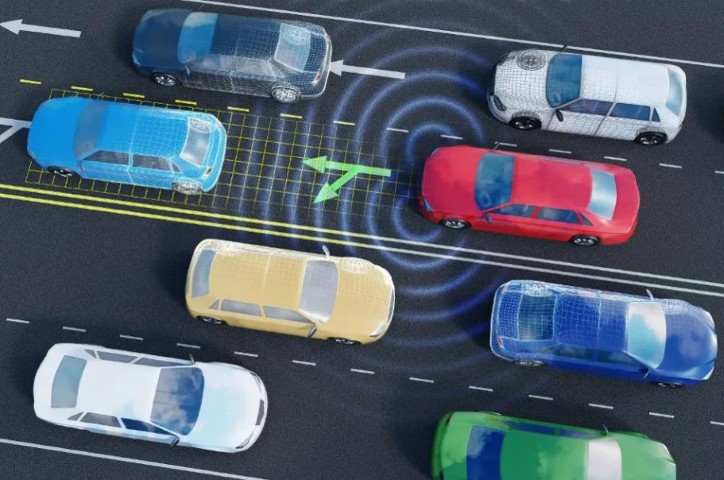 Advanced Driver Assistance Systems (ADAS) is a relatively new technology that has helped people in numerous ways. It’s an advanced technology with high-tech features that make life much easier for people – more than they can imagine. Read further to learn more.
Advanced Driver Assistance Systems (ADAS) is a relatively new technology that has helped people in numerous ways. It’s an advanced technology with high-tech features that make life much easier for people – more than they can imagine. Read further to learn more.
What is the Advanced Driver Assistance System?
Advanced Driver Assistance Systems (ADAS) have emerged as a crucial technological advancement in automotive safety. These systems are specifically developed to enhance driver safety and provide assistance while operating a vehicle. By incorporating a human-machine interface, ADAS aims to improve the driver’s ability to respond effectively to potential hazards on the road.
One of the key functions of the ADAS system in cars is to provide drivers with alerts through different sensory cues, such as sound, vibration, and pictographs. These alerts are generated in real-time using AI-powered algorithms, which continuously analyze the surrounding environment to mitigate the risk of accidents. The ADAS system utilizes a range of applications to deliver timely notifications to drivers, including:
- Pedestrian detection
- Lane departure warning
- Traffic sign recognition
- Automatic emergency braking
What are Some ADAS Applications?
Driver Drowsiness Detection
Driver Drowsiness Detection is a vital feature that aims to mitigate the risks associated with driver fatigue and inattentiveness. This technology employs different methods to determine the driver’s level of alertness.
By monitoring the driver’s head movements and heart rate, sensors can accurately assess signs of drowsiness. Additionally, the system issues timely alerts similar to those used for lane detection, ensuring the driver is promptly notified of any potential decrease in attention.
Automatic Emergency Braking
Automatic Emergency Braking is an intelligent system that utilizes sensors to detect imminent collisions with other vehicles or obstacles on the road. This application can effectively warn the driver of potential dangers by continuously monitoring the surrounding traffic and measuring distances.
In critical situations, the system takes preventive action by automatically engaging the brakes, tightening seat belts, reducing speed, and even employing adaptive steering techniques to avoid a collision.
Automatic Parking
Automatic Parking is an innovative technology that assists drivers in maneuvering their vehicles into parking spaces safely. By incorporating rearview cameras and multiple sensors, this system provides drivers with enhanced visibility of their surroundings, surpassing the capabilities of traditional side mirrors. Some advanced systems can even take control and perform the parking procedure autonomously, requiring minimal input or intervention from the driver.
Adaptive Light Control
Adaptive Light Control is a sophisticated feature that optimizes a vehicle’s headlights to adapt to varying external lighting conditions. This technology dynamically adjusts the strength, direction, and rotation of the headlights, aligning them with the environment and darkness level. Doing so ensures optimal visibility for the driver while minimizing glare for oncoming vehicles, ultimately enhancing safety during nighttime driving.
Advantages of Advanced Driver Assistance Systems (ADAS)
Advanced Driver Assistance Systems (ADAS) have significantly reduced road accidents and enhanced overall safety. With a primary focus on driver well-being and smoother rides, ADAS offers numerous benefits. Let’s explore some of them:
Improved Safety Systems
ADAS integrates advanced technologies to prevent collisions and promote safe driving practices. Providing timely notifications and alerts assists drivers in recognizing and avoiding potential dangers on the road.
Adaptive Features
ADAS encompasses various adaptive features such as adaptive cruise control, automated lighting, and pedestrian crash avoidance mitigation (PCAM). These features are vital in enhancing driver awareness by issuing navigational warnings, including lane departures, vehicles in blind spots, and traffic conditions.
Co-Pilot Functionality
The ADAS system is a reliable co-pilot, actively alerting and notifying drivers about potential road hazards. It acts as a guide, assisting drivers in making safer decisions by utilizing various helpful features.
Fuel Efficiency
ADAS contributes to fuel savings by optimizing the driving style of vehicles. By implementing intelligent driving techniques, ADAS can reduce fuel consumption by up to 15%, leading to cost savings and reduced environmental impact.
Reduced Maintenance Costs
By minimizing accidents and mitigating wear factors on tires and brake pads, the ADAS system helps reduce vehicle maintenance expenses. Studies have shown that ADAS implementation can lead to maintenance cost reductions of up to 6%.
Get Help of Experts
While driving is the most important skill to learn and offers great convenience, it can often lead to serious accidents. Whether you have an ADAS integrated into your vehicle or not, if you get into an accident, you might need lawyer help. In that case, look for experienced, skilled legal experts and lawyers to help you handle legal claims and overcome the losses.










